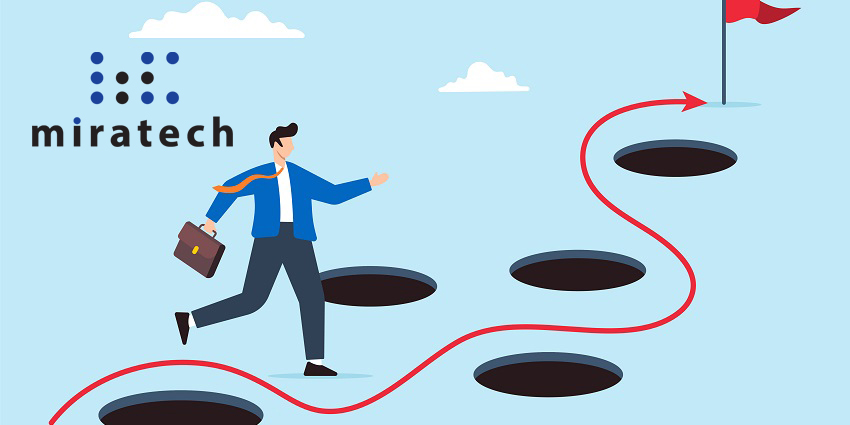As the world has grown increasingly digitized, companies have rapidly begun shifting more of their teams, technologies, and processes into the cloud. The “SaaS” or Software as a Service space is booming, offering access to crucial benefits like agility, cost savings, and scalability.
In the contact center landscape, this movement has sparked increasing interest in the CCaaS space, a marketplace currently accelerating toward a value of $15.07 billion by 2029. With CCaaS solutions, companies can unify distributed workforces around the quest for higher levels of customer satisfaction, empowering teams to thrive wherever they are.
However, making the transition to a new platform, particularly one that consolidates a variety of critical business tools isn’t without its challenges. To unlock the true value of CCaaS, companies need not only choose the right platform, but also plan the most effective migration roadmap.
Charlie Godfrey, Senior Director of the Innovation and Vision Team at Verizon, says:
Migrating to CCaaS is no longer an option for many business leaders. To thrive in today’s complex experience-focused economy, businesses need the agility the cloud can offer. With the right CCaaS strategy, organizations can ensure they’re prepared to better serve their customers, increase loyalty, and improve retention.
Why CCaaS with Genesys and Verizon?
As workplaces evolve, alongside customer expectations, the growing CCaaS market has introduced a variety of toolkits for today’s business leaders to consider. The Genesys contact center software, offered in partnership with the global telecommunication leaders at Verizon, stands as one of the most popular tools among growing businesses today.
This all-in-one solution consolidates crucial technologies, from customizable IVR systems to worldwide unified communications into a single platform, minimizing costs and complexity for teams. The easy-to-use and configurable platform combines some of the most crucial resources businesses need with exceptional reliability and security. Features include:
- Robust omnichannel contact center software: A comprehensive ecosystem for automated routing and distribution, interactive voice response, voice bot and chatbot self-service, co-browsing, screen sharing, and inbound or outbound engagement.
- Essential integrations: The Genesys contact center comes with built-in unified communications and workplace optimization tools, as well as a marketplace for essential software add-ons and a host of valuable APIs.
- Intelligent self-service: Alongside tools for creating conversational bots and assistants, Genesys CCaaS also includes access to customizable IVR systems, intelligent automated routing, streamlined customer authentication, and more.
- Workforce engagement and management: With built-in WFM tools, businesses can leverage AI-powered forecasting and scheduling, interaction recording, screen recording, gamification tools, knowledge management, and screen recording in one place.
- In–depth analytics: Intelligent insights offer behind-the-scenes views of customer journeys with real-time and historical reporting, trend analysis dashboards, and supervisor and agent workspaces designed to boost business outcomes.
What’s more, Genesys and Verizon offer a range of value-added services and tools, from a comprehensive customer journey orchestration platform (Pointillist) to partner-driven solutions.
How to Migrate: The Step-by-Step Guide
Of course, choosing the right CCaaS platform is only the first step for today’s business leaders. The migration journey to CCaaS comes with a number of important stages to consider. Here are some of the most important points companies will need to address when building their own strategy:
Step 1: Assembling the Team
The first step in a successful migration project is ensuring all of the right subject matter experts and stakeholders are on-board to make the transition as seamless as possible. The right CCaaS vendor and partner network can assist with planning each step of the process. However, teams will also need to think about crucial team members such as:
- Developers for integrating APIs and creating automation workflows
- Contact center supervisors for monitoring agent performance
- Contact center administrators for creating call queues and managing users
- Project managers for aligning and overseeing the implementation of new tools
- Network administrators for managing and monitoring network architecture
Some business leaders may also want to assign contact center agents as early adopters of the new platform, asking them to provide insights and feedback on functionality.
Step 2: Auditing the Ecosystem
Next, businesses need to conduct a thorough audit to ensure the company network and environment is ready to support a new cloud contact center. The auditing process can also help businesses to define crucial functionalities and tools they’ll need to access, as well as any APIs or integrations that will need to be implemented to align various tools.
A comprehensive audit will involve:
- Reviewing the physical environment to see if it meets the requirements for CCaaS
- Reviewing the system and SIP provider’s migration technical requirements
- Preparing to connect networks and appliances to the cloud by defining interdependencies
- Establishing a Quality of Service strategy for monitoring CCaaS performance
Step 3: Choose the Implementation Approach
After auditing the network environment and pinpointing any issues, businesses can then move on to determining their migration strategy. There are numerous options to choose from here. A customer-led implementation approach involves utilizing expertise in-house to transition crucial technologies into the cloud. This can be a challenging process for companies without the right internal resources.
Alternatively, businesses can consider a provider-led integration, or a partner-led implementation, which provides access to additional support, remote configuration guidance, and even useful training and resources to improve the chances of a successful migration.
Step 4: Going Live
Finally, companies can begin implementing their new CCaaS system into the business environment. Before rolling out new technology, it’s useful to set expectations with team members, ensure each employee in the team is aware of their role throughout the project, and provide any necessary training.
The best vendors of CCaaS solutions will provide crucial assistance during this stage, training agents, supervisors, and project management teams and offering ongoing support throughout the migration. They can even assist businesses in optimizing their CCaaS solution once it goes live.
Transitioning to the Cloud with Genesys and Verizon
Adopting a new CCaaS platform can be a powerful way for business leaders to unlock a range of crucial benefits in today’s CX-focused landscape. However, the success of any team’s migration depends on their ability to implement the right strategy, and work with the correct vendors.
Genesys and Verizon work with business leaders every step of the way to make sure every migration is a success, combining success planning with expert guidance to drive results. Working together, these two innovative companies can eliminate the challenges involved in the transition to CCaaS, so businesses can see a rapid return on their investment.







